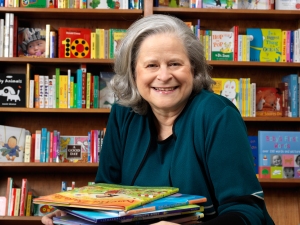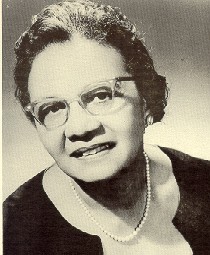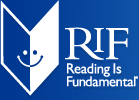 Earlier this week The New York Times published an article discussing how young Latino students are not seeing themselves in books frequently enough, and the obstacle many educators feel that omission puts in the path for enjoyment as well as for learning from books for these young children. The Cooperative Children’s Book Center at the University of Wisconsin-Madison of Education, which compiles statistics about the race of authors and characters in children’s books published each year, notes that in 2011 only 3 percent of the 3400 books reviewed were written by or about Latinos; this proportion is unchanged over the last decade. And yet, Hispanic students are one quarter of the nation’s public school enrollment.
Earlier this week The New York Times published an article discussing how young Latino students are not seeing themselves in books frequently enough, and the obstacle many educators feel that omission puts in the path for enjoyment as well as for learning from books for these young children. The Cooperative Children’s Book Center at the University of Wisconsin-Madison of Education, which compiles statistics about the race of authors and characters in children’s books published each year, notes that in 2011 only 3 percent of the 3400 books reviewed were written by or about Latinos; this proportion is unchanged over the last decade. And yet, Hispanic students are one quarter of the nation’s public school enrollment.
Several years ago Reading Is Fundamental (RIF) initiated our Multicultural Literacy Campaign, borne from our concern with the NAEP figures we were studying from years past and the distance with which African-American, HIspanic and American Indian children continued to perform behind their Asian and Caucasian peers. Our campaign is a multi-year effort designed in part to provide children the opportunity to explore and learn about their own culture and the culture of others, the “mirrors and windows with sliding glass doors” concept as articulated by Dr. Rudine Sims Bishop. One component of our effort is a yearly compilation of multicultural book sets through the generous sponsorship of Macy’s; these sets are distributed to more than 500 sites annually with the book lists and activities posted online for all to use.
RIF held the launch for the 2012 collection at the Library of Congress Young Readers’ Center with a panel made up of authors and illustrators whose books are featured in that “CELEBRATIONS” collection; the panel was chaired by Dr. Violet Harris, a literacy expert and chair of RIF’s Literature Advisory Board.
In her presentation, Dr. Harris set the context for the audience regarding the need for multicultural literature for all children, literature representing as many cultures as possible by discussing the work of Dr. Nancy Larrick, the second president (56-57) of the International Reading Association. Larrick is said to have noted the impetus for her oft-quoted study in the early 1960′s was when a five year old black girl asked her why all the children were white in the books she read. Her question came more than 20 years after Charlemae Rollins and others had begun a campaign for more positive examples of blacks and black culture in books for children. The lack of progress as well as that little girl’s sincere question compelled Dr. Larrick to investigate and produce the article “The All White World of Children’s Books” published in The Saturday Review of Books in 1965.
 Rollins had published her groundbreaking We Build Together in 1948; this is a publication which “highlighted criteria for choosing books that portrayed Blacks realistically and built democratic attitudes among all people.” Rollins noted in her publication:
Rollins had published her groundbreaking We Build Together in 1948; this is a publication which “highlighted criteria for choosing books that portrayed Blacks realistically and built democratic attitudes among all people.” Rollins noted in her publication:
For many years books about Negro children followed a stereotyped pattern. The characters portrayed were the barefoot menial, or the red-lipped clown. Rarely did the Negro character in a story where there were other children ever take part in the story as equals. Illustrators, it seemed, could not resist presenting the quaint ‘pickaninny type’.
With regret we note today the change in children’s literature has not kept pace as many of us would have hoped. Similar statements can be made and are indeed written about the lack of inclusion of other cultures in children’s literature.
As Dr. Harris further noted ”…I want to emphasize…, it is a fight that goes on constantly. Each generation or even every couple of years it is two steps forward, one step back.” And further food for thought from Dr. Harris was her question to us: How can we say to the rest of the world that you need to model yourselves after us, our educational systems, our political systems, our economic systems and so forth, when we disenfranchise a significant portion of our citizenry?
You have finished a month of hard work producing ideas for picture books. As you move further into and with each idea, I challenge you to give very serious attention to the issue of children seeing themselves as well as having a window on the world. The book does not always need to be “about” diversity…perhaps it will be like HOW MANY SEEDS IN A PUMPKIN? by Margaret McNamara and illustrated by G. Brian Karas. The classroom shown through the illustrations is diverse, and I have actually heard children mention that diversity they can see in the book. The experience of seeing the diversity present in a book was new to them, but a common everyday experience in the school each attends.
We as a nation have much to do to prepare each child as fully as possible to read well. One element and one relevant to your work is to show we indeed as a nation value each child and celebrate each child; and part of that visible celebration must be that each child sees and reads about children “just like me.”
Book People Unite!
P. S. How can I post on this blog without giving a roaring round of applause to Tara for her sponsorship of PiBoIdMo as well as personally say ‘Thank You” to her and to all who have purchased from the PiBoIdMo store where the proceeds come to RIF. We are deeply appreciative!
.
 Carol H. Rasco is President and CEO of RIF. She joined RIF in 2001. Throughout her life, Carol has been a devoted advocate for children, youth, and families, as a professional and as a volunteer.
Carol H. Rasco is President and CEO of RIF. She joined RIF in 2001. Throughout her life, Carol has been a devoted advocate for children, youth, and families, as a professional and as a volunteer.
Prior to this position, Carol was the executive director for government relations at the College Board. From 1997 through 2000, Carol served as the senior adviser to U.S. Secretary of Education Richard W. Riley, and as director of the America Reads Challenge, a four-year national campaign to promote the importance of all children reading well and independently by the end of the 3rd grade. Previously, Carol worked for four years in the White House as domestic policy adviser to the president and directed the Domestic Policy Council.
Originally from Arkansas, Carol worked as the chief policy adviser in the Arkansas governor’s office for 10 years and also served as the liaison to the National Governors Association. Additionally, Carol has extensive experience as a volunteer for arts organizations and disability advocacy groups. Carol received her bachelor’s degree from the University of Arkansas and earned a master’s degree from the University of Central Arkansas. She has taught in the public school system and worked as a middle school counselor.
Carol serves on the Board of Trustees of Columbia College in Columbia, South Carolina. She is the mother of Hamp and Mary-Margaret, and the proud grandmother of William and Charlie Marks.




Yay for RIF. I volunteered for RIF years ago. What fantastical work they do. Thank you for sharing about the Multicultural Literacy Campaign. How wonderful. And yay for Tara and all the picture book writers who have purchased from the PiBoIdMo. I wear my shirt proudly. Thanks Carol.
Thanks Carol.
This is such an important truth. I’m so glad that it is getting some media air time. Thank you for speaking on it, and for the good work you are doing with RIF.
Thanks for the post and the important work you do.
Thank you for the work you do. Your post brings light to my writing.
Great to see you here, Carol! We’ve met a couple of times, once at a blogging conference, and I’m so grateful for all you do. As a past educator, I’ve seen the difference RIF has made, and as a mom with kids of different races, I applaud the work you talked about in this post. Happy holidays…
Thank you for shining the light on issues writers and illustrators don’t often think about. Many decades ago we had the Bernstein Bears books portraying the world, but I guess children need to see themselves mirrored in the books more directly.
Anjali
This is an informative post that will make me think differently as I write drafts from my ideas. Thanks for the example of HOW MANY SEEDS IN A PUMPKIN to make us think of creative ways to approach these subjects as we write.
Thank you for all you do and for your eye-opening post!
So much in a picture book comes down to the illustration. I think it is good for illustrators to expand their image zone beyond immediate family and and the local neighborhood.
I don’t think they try to exclude, but by not expanding their “community” they only draw a small view.
It was interesting to read this after reading the article in the latest SCBWI magazine, called “Will Latino Stories Sell?” The author says several multicultural publishes have closed, and that her editor has told her not to write Latino stories! Author Laura Lacamara asks, “How did we lose so much ground?”